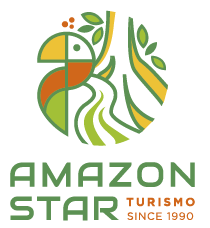At the point where the Tapajós and Amazonas rivers meet, half way to the Atlantic, you find Santarém a small and typical Amazonian town with a rich cultural heritage. In this area, it was found the remains of a civilization called by archaeologists – Tapajônica, taking its name from the Tapajósriver. The ceramic artifacts: vases, cooking pots are decorated with lovely and intricate designs. Replicas can be bought at a shop in town.
Arapiúns: a place to explore the untouched and pristine forest.
Tapajós National Forest Park: (650 thousand hectares) visitors find, with a special forest guide, that trekking in the Amazon may be an eye-opener. The guide points out the trees, animals and birds that live at the park, sometimes unseen to visitors.
Fordlândia, a rubber tree tap extraction project created by Henry Ford at the beginning of the 20th century. The produce was exported to a tire factory that supplied Ford vehicles at the production line. The place is not in the best shape but it is interesting to see a typical north american small town, following the original plan, in the middle of the forest.
IgarapéJari: the community here preserves the traditional caboclo way of living, the flour house, cassava root plantation and other vegetables, fish and their use of the forest as a “supply storage” for their daily needs. “read more”
Maicá Lake: in the Amazon, lakes are not like the ones existing in other places. An Amazonian lake, is always linked by a channel to a river, igarapé or another lake. Locals know that the Maicá is a fish nursery thus attracting birds, mammals and reptiles. A special spot for birdwatchers and also if one wants to have a go at trying to fish the illusive piranha, famous for nibbling at the bait without the fisherman noticing!
Óbidos: on the left bank of the Amazon is the Amazon’s narrowest point – 1890 m / 1.1 mi. wide. Óbidos is called the “Gorge of the Amazon” and its inhabitants “bucket” for the “buckle” formed by the river in front of the city. As in compensation for being so narrow, here the river averages 100 m / 328 ft.deep.
Alenquer: in general the Amazon is quite plain but here one finds gorges, valleys, a number of waterfalls and rock formations. At the “City of the Gods”, carved on the rock walls there are a number of prehistorical drawings dated 12,000 b.C. Trekking is full of surprises and beautiful places.
Bosque Santa Lúcia / Santa Lúcia Arboretum: an introduction to more than 200 native Amazonian trees and interesting plants.
Monte Alegre: prehistorical sites on Ererê ridge, very close to town, dated 12000 years b.C. are a clear indication that the Amazon was inhabited long before our time. Trek the forest for a visit to the sites.
